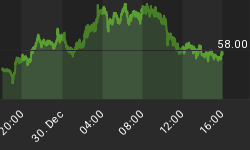A fair part of the bull story for copper this year has been supply-side fears.
The world’s largest mines are in South America, which has suffered from catastrophic levels of coronavirus infections. True, China’s recovery has played a role in the booster’s case. So have the role of copper in the growing electric vehicle (EV) market and the weakening U.S. dollar, which has lifted all commodities.
We’re offering timely emails with exclusive analyst commentary and some best practice advice – and you choose how often you receive it. Sign up here.
Copper outperforms other metals, including aluminum
But just comparing copper to aluminum, the latter lifted only in proportion to the weakening dollar. Meanwhile, copper has risen from March lows much more.
From April to date, aluminum has jumped some 20%, largely as a result of a weakening dollar and recovering Chinese demand sucking in imports.
But copper has risen some 33%, driven by the same dynamics but with the added anxiety of supply-side risks from major suppliers in South America.
Coronavirus crisis in Peru, world’s No. 2 copper producer
Adjusting for population size, two of the countries hardest hit my infections in the world have been Peru and Ecuador. Both countries have seen more than 1,000 excess deaths per million inhabitants.
The two Latin American countries also have the highest excess percentage — excess deaths expressed as a share of normal deaths for the same period — suggesting the impact on their economies, health care systems and working practices may be even more severe than the official statistics suggest.
Developing economies like Peru cannot afford prolonged or repeated lockdowns. Like India, South Africa and many other countries, containment is at best local and at worst nonexistent.
Chile’s copper output perseveres
Yet, some copper producers have coped remarkably well and their performance rather undermines the copper market’s supply anxiety.
Chile has maintained production at the majority of its copper mines. So far, Chile has seen relatively low levels of infection among mining communities.
In the first half of the current year, Chile’s copper output totaled 2.9 million tonnes, Resourceworld reported. The total marked a 3.7% increase from the same period last year.
Remarkably, the volume of copper production in the country remains stable despite the overall drop in general industrial production in Chile, which was equivalent to -9%.
Most mining companies were swift to implement appropriate sanitary measures. Despite protestations from unions, the measures have been largely successful. State-owned Codelco, the world’s largest copper producer, increased its output by 4.7% in the first six months of 2020 on a year-over-year basis. Meanwhile, the wider Chilean population has seen infections top 400,000 as of the end of August and deaths exceed 10,000.
Not all mines, however, are equal.
Some projects have been suspended in recent months, the article reports, including Chuquicamata, one of the largest copper mines in the country. The mine produces more than 320,000 metric tons of copper per year.
Even Peru, badly hit by the pandemic, has seen copper production at least bounce back strongly with July’s figure, quoted by BN Americas at 199,000 tons, just 2% less than in the same month last year.
Market deficit
The market balance for copper remains in deficit. According to MetalBulletin, some 1.15 million tons of production was lost to the pandemic this year, with a further 672,000 tons lost due to other disruptions.
Demand has also faltered with industries across first Asia, then Europe, and finally the Americas, shutting down from February through June.
While many are now back at work, few are at capacity. Demand remains weaker than before the pandemic hit.
The market, however, may be more balanced than inventory levels suggest.
The LME is down to 114,000 metric tons, half of which is lined up for physical load-out. At the same time, China has imported 440,000 tons more copper in the first half of this year than last. While ore imports are flat, scrap imports are down some 50%. Reuters reports there is much speculation the state is stockpiling copper, suggesting current imports are not necessarily a result of end-user demand.
All this suggests that while copper may have further to rise, its fundamentals are not as solid as bulls would have us believe.
There is a strong element of speculation in the strength of market price rises. If the supply market can maintain its output, one plank of the bulls’ narrative going forward may prove to be less supportive than has been the case so far.
By AG Metal Miner
More Top Reads From Safehaven.com:

















